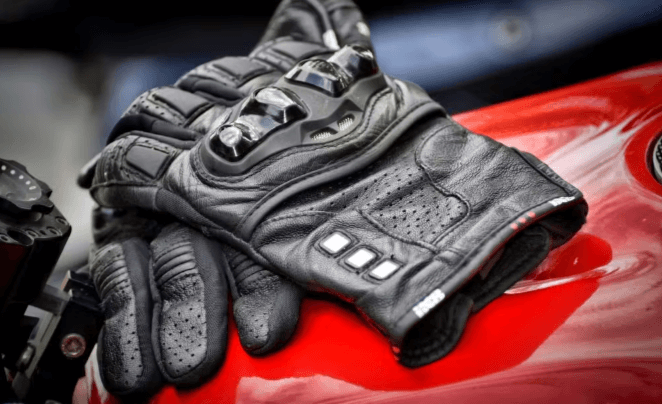What are the essential safety gear items every rider should wear?

Introduction
Riding a motorcycle is inherently riskier than driving a car due to the lack of physical protection. This makes wearing appropriate safety gear absolutely essential. The right gear not only helps prevent injuries in case of accidents but also enhances your overall riding experience by providing comfort and protection from the elements.
Helmets
The helmet is arguably the most critical piece of safety gear for any rider. It protects the most vulnerable part of your body—your head.
Types of Helmets
- Full-Face Helmets: Offer the most protection as they cover the entire head and face.
- Modular Helmets: Provide flexibility with a flip-up chin bar.
- Open-Face Helmets: Cover the top and sides of the head but leave the face exposed.
- Half Helmets: Offer minimal protection, covering only the top of the head.
Materials and Construction
- Polycarbonate: Affordable and offers good impact resistance.
- Fiberglass Composite: Lightweight and strong.
- Carbon Fiber: Offers superior protection and lightweight properties but is more expensive.
Fit and Comfort
- Ensure the helmet fits snugly without being too tight.
- It should be comfortable for long rides and not cause pressure points.
Certifications
- DOT (Department of Transportation)
- ECE (Economic Commission for Europe)
- Snell Memorial Foundation
Gloves
Gloves are essential for protecting your hands from abrasions and impacts.
Importance of Gloves
- Protects hands in case of a fall.
- Enhances grip on the handlebars.
- Provides comfort in different weather conditions.
Types of Gloves
- Racing Gloves: High protection and made for performance.
- Touring Gloves: Designed for long-distance comfort.
- Off-Road Gloves: Durable and breathable for rough terrains.
- Winter Gloves: Insulated to keep hands warm.
Materials
- Leather: Offers excellent protection and durability.
- Textile: Provides flexibility and is often waterproof.
- Hybrid: Combines the benefits of leather and textile.
Fit
- Should be snug without restricting movement.
- Ensure they cover the wrists adequately.
Jackets
A good motorcycle jacket protects your upper body and can save you from severe injuries.
Protection
- Impact Protection: Features like armor at the elbows, shoulders, and back.
- Abrasion Resistance: Durable materials that resist wear and tear.
Materials
- Leather: Known for durability and classic style.
- Textile: Offers versatility and often includes waterproofing.
- Mesh: Ideal for warm weather, providing breathability.
Fit and Features
- Should fit snugly without restricting movement.
- Look for features like ventilation, pockets, and adjustable straps.
Pants
Riding pants are crucial for protecting your lower body.
Importance
- Protects legs from abrasions and impacts.
- Offers additional weather protection.
Materials
- Leather: Provides excellent abrasion resistance.
- Textile: Versatile and often includes armor.
- Kevlar Reinforced: Offers high resistance to abrasions.
Fit and Features
- Should fit well and be comfortable.
- Look for reinforced areas at the knees and hips.
Boots
Proper riding boots protect your feet and ankles from injury.
Protection
- Reinforced toes and heels.
- Ankle support to prevent twisting injuries.
Types
- Racing Boots: High protection and performance features.
- Touring Boots: Designed for comfort on long rides.
- Off-Road Boots: Built for rugged terrain.
- Urban Boots: Stylish and protective for city riding.
Fit and Features
- Should fit snugly but comfortably.
- Look for features like waterproofing and non-slip soles.
Body Armor
Body armor provides additional protection for critical areas.
Types
- Chest Protectors: Shield the chest and ribs.
- Back Protectors: Protect the spine.
- Knee and Elbow Guards: Provide impact protection.
Materials
- Foam: Lightweight and comfortable.
- Plastic: Offers higher impact resistance.
Fit and Benefits
- Should fit comfortably under or over clothing.
- Provides critical protection in case of falls or collisions.
Visibility Gear
Being visible to other drivers is crucial for safety.
High-Visibility Clothing
- Jackets, vests, and pants in bright colors.
Reflective Accessories
- Strips, stickers, and patches that reflect light.
Riding Suits
Riding suits offer comprehensive protection.
One-Piece vs. Two-Piece
- One-Piece: Better protection and aerodynamics.
- Two-Piece: More flexibility and comfort.
Materials
- Leather: Offers superior protection.
- Textile: More versatile and often waterproof.
Benefits
- Full-body protection from abrasions and impacts.
Eye Protection
Protecting your eyes from debris and wind is essential.
Goggles
- Ideal for off-road riding.
Visors
- Integrated into helmets for easy use.
Sunglasses
- Provide UV protection and reduce glare.
Ear Protection
Riding can expose you to high levels of noise, which can damage your hearing.
Importance
- Reduces wind noise.
- Protects against hearing loss.
Types
- Earplugs: Simple and effective.
- Noise-Cancelling Earplugs: Offer advanced protection.
Neck Protection
Protect your neck from injuries and the elements.
Neck Braces
- Provide support and reduce the risk of neck injuries.
Scarves and Balaclavas
- Offer protection from wind and cold.
Base Layers
Base layers enhance comfort and performance.
Importance
- Regulate body temperature.
- Provide additional protection.
Materials
- Moisture-Wicking Fabrics: Keep you dry and comfortable.
- Thermal Fabrics: Keep you warm in cold weather.
Rain Gear
Staying dry is crucial for comfort and safety.
Types
- Rain Jackets and Pants: Waterproof and breathable.
- Rain Suits: Full-body protection.
Materials
- Gore-Tex: High-quality waterproof material.
- PVC: Affordable and effective.
Communication Devices
Staying connected while riding can enhance safety and convenience.
Bluetooth
- Allows hands-free communication and navigation.
Intercom Systems
- Enable communication with other riders.
First Aid Kits
Having a first aid kit can be lifesaving in emergencies.
Importance
- Provides immediate medical assistance.
Contents
- Bandages, antiseptics, pain relievers, and other essentials.
Safety Standards and Certifications
Ensure your gear meets recognized safety standards.
DOT
- U.S. safety standard for helmets.
ECE
- European safety standard for helmets.
Snell
- High-performance helmet standard.
Maintaining Your Gear
Proper maintenance ensures your gear lasts longer and remains effective.
Cleaning
- Follow manufacturer instructions for cleaning.
Storage
- Store in a cool, dry place.
Replacement
- Replace gear when it shows signs of wear or after a crash.
Choosing the Right Gear
Selecting the right gear involves considering several factors.
Factors to Consider
- Safety, comfort, and style.
Personal Preferences
- Choose gear that fits your riding style and needs.
Budget Considerations
Quality gear doesn’t have to break the bank.
Finding Quality Gear Within Budget
- Look for sales and discounts.
- Consider second-hand gear in good condition.
Common Mistakes to Avoid
Avoid these mistakes to ensure you stay safe.
Overlooking Fit
- Poorly fitting gear can compromise safety.
Skipping Certain Gear
- Every piece of gear plays a vital role in protection.
FAQs
What are the most important pieces of safety gear for riders?
- Helmets, gloves, jackets, pants, and boots are crucial for protection.
How should I choose the right size for my helmet?
- Measure your head circumference and try on several helmets to find a snug but comfortable fit.
Why is it important to wear gloves while riding?
- Gloves protect your hands from abrasions and impacts and enhance grip and comfort.
Can I use regular boots for riding?
- It’s best to use riding-specific boots as they offer reinforced protection and support.
How often should I replace my riding gear?
- Replace gear when it shows signs of wear or after any significant impact.
What should I look for in a riding jacket?
- Look for armor protection, abrasion-resistant materials, and a good fit.
Conclusion
Wearing the right safety gear is non-negotiable for riders who want to protect themselves on the road. From helmets and gloves to jackets, pants, and boots, each piece of gear plays a crucial role in ensuring your safety. Remember, investing in high-quality safety gear is an investment in your well-being. Stay safe and enjoy the ride!





